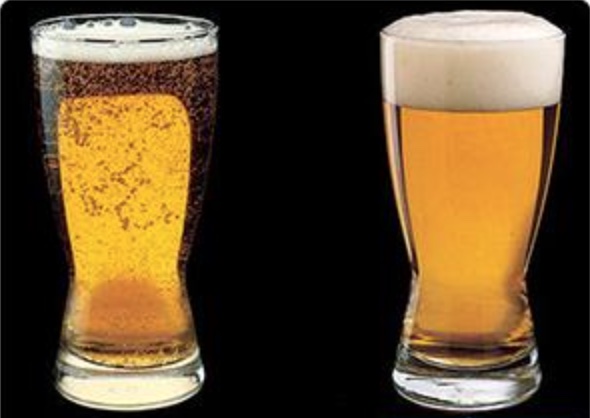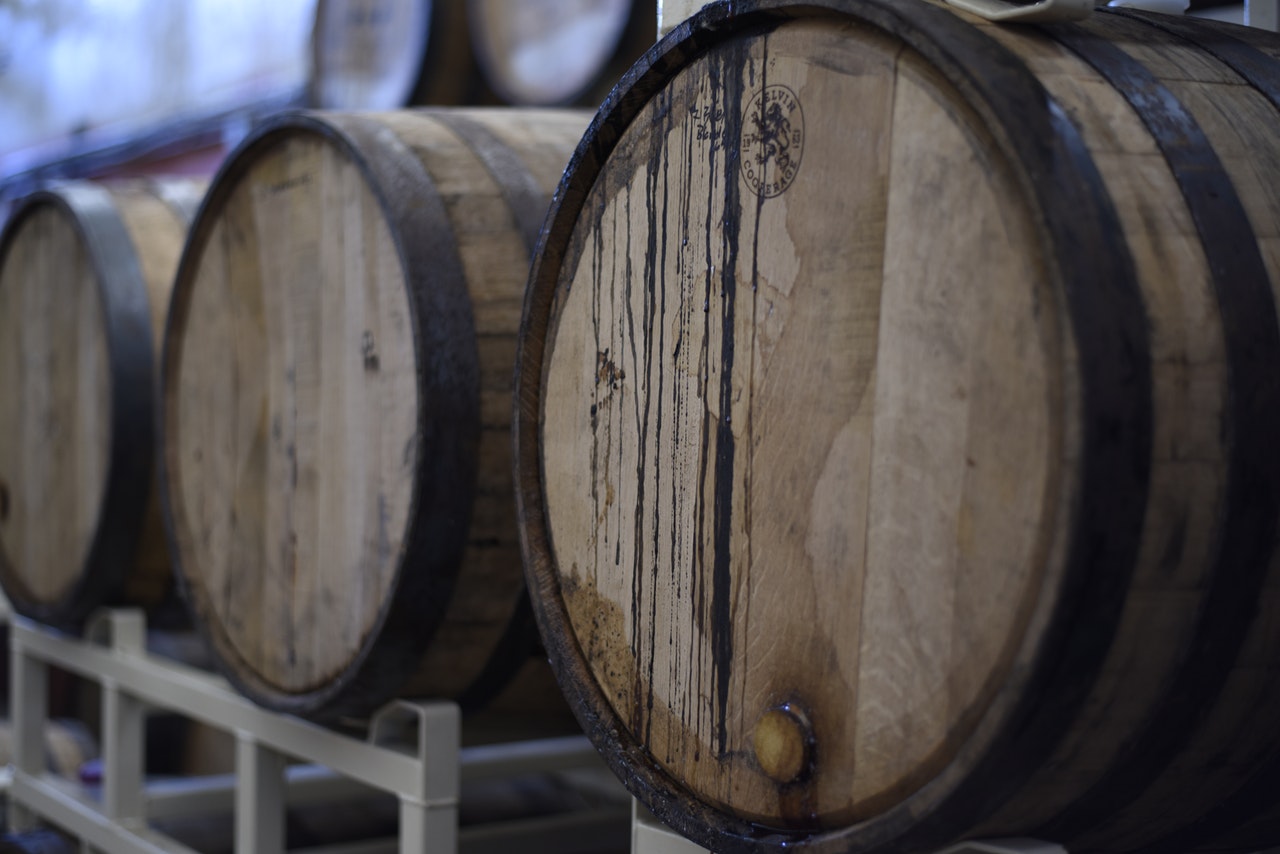By José Perez
If you got served the two beers below, which one would you choose to drink?
If you picked the one on the right, then you can already instinctively recognise a beer poured in a “beer-clean” glass compared to one poured in a not so beer-clean glass.
But what is a “beer-clean” glass? What does it mean and how is it different from a “clean” glass? Most importantly, how should you clean your beer glasses to ensure they are beer-clean?

A beer-clean glass has been cleaned in such a way that it does not alter the appearance and aroma of the beer poured into it. This means it is free of any dirt, dried beer, sanitizer or oil/grease residue on the glass surface. When this is achieved, the beer will be the most visually appealing, have good head retention and lacing will form on the inside of the glass as the beer is consumed. A non-beer-clean glass on the other hand, will typically have poor head retention (this is caused by microscopic oil residue that degrades head formation and retention), bubbles clinging to inside of the glass in the liquid portion of the beer, or can also have lingering smell from the cleaning or sanitizing products used to clean the glass.

Example of lacing in a beer-clean glass (right) vs a non-beer-clean glass (left)
Now that we know how to recognise a beer-clean glass, let’s have a look at how we can achieve this result. The following are the industry best practices for cleaning beer glassware, and more details can be found in the Brewers Association Draught Beer Quality Manual (link at the end this article):
- Empty any residual liquid from your dirty glass.
- Clean the glass using a brush, hot water and a suitable detergent. In theory, you should avoid any oil-based or fat-based detergent as they will leave a film on the glass that can be detrimental to head retention. Low suds detergent can be used. In practice, if you don’t have any of these at hand, I have found that regular dishwashing detergent works too but try to use one with a neutral sent and make sure you rinse your glasses very well with hot water. Also, only use your brush to clean beer glasses, don’t use it to do the dishes from that Beef Bourguignon you had for dinner last night.
- Rinse your glass well with hot water.
- Rinse of your glass in a sanitizer solution. This step is more directed at commercial operations so personally I don’t bother with it at home.
- Leave your glass to air-dry upside down on a corrugated surface, a stainless-steel dish rack or anything that allows air under the glass. Do not dry your glass with a towel as this can leave lint on the glass surface and transfer odours.
- When you are ready to use the glass again, give it a quick rinse with cold water before pouring your beer into it.
Once you’re done cleaning your beer glass, there are a few tests that you can do to make sure you did a good job:
- Sheeting test: dip you glass in water and lift it out upside down. If the water is evenly distributed on the inner surface, then you have a beer-clean glass. If the water forms droplets on the inner surface, this means that a small film is still present and that the glass should be cleaned again.
- Salt test: wet your glass and sprinkle salt on the inside surface of your glass. If the salt adheres evenly to the entire surface, then you have a beer-clean glass. Salt will not adhere where a greasy film is still present.
- Lacing test: this one is my favourite as it involves pouring yourself a beer. As mentioned earlier in the article, the foam will stick to the side of your beer-clean glass in parallel rings with every sip you drink. If the foam adheres to the glass in a random pattern or does not adhere at all, you may want to keep practicing your beer glassware cleaning skills ;-)!

Example of salt test. Beer-clean glass (left) vs a non-beer-clean glass (right)
Now you know pretty much everything there is to know about beer-clean glassware so you can enjoy an amazing looking beer at home after putting so much effort into brewing it to perfection.
Cheers!
Resources:
Brewers Association Draught Beer Quality Manual – Fourth Edition (pages 53 to 55)
Draught-Beer-Quality-Manual-2019.pdf (brewersassociation.org)








